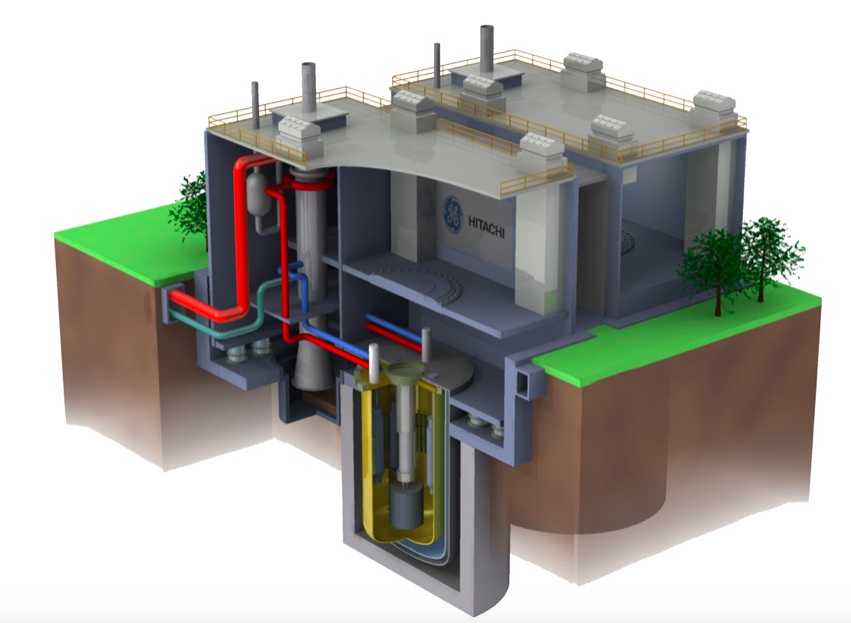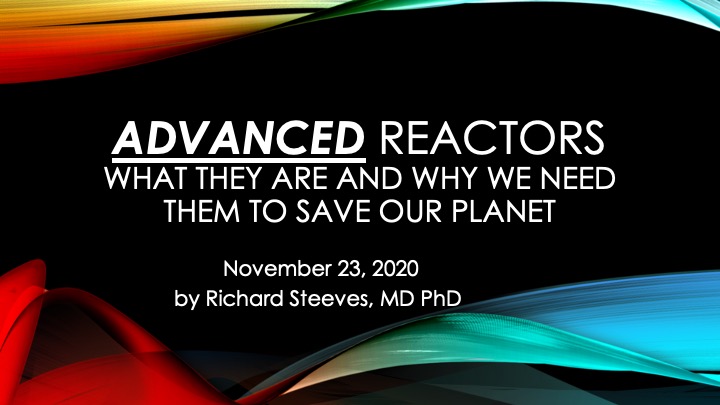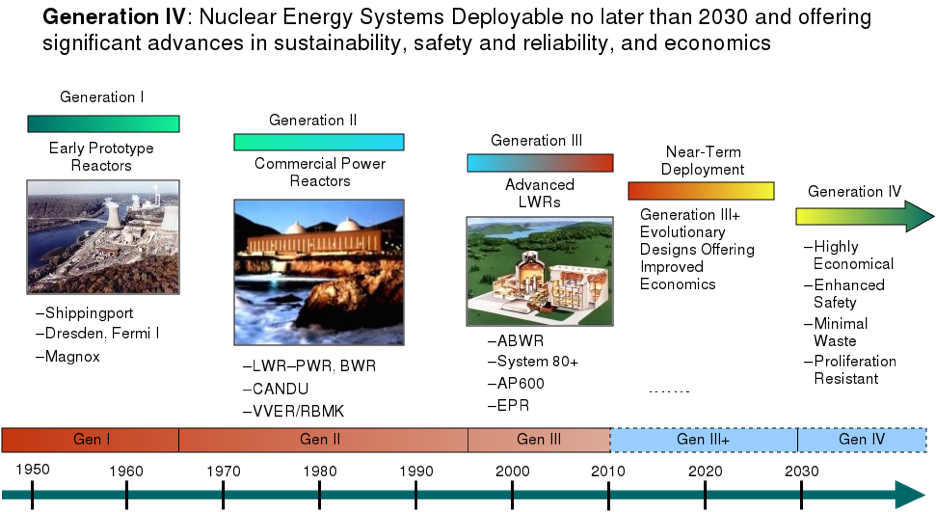Advanced Nuclear Ractors
Even before Japan’s tsunami and nuclear accident shocked the world in 2011, nuclear engineers have been busy creating new designs that would allow reactors to dissipate their residual heat without requiring any electricity or other human control. As their innovative designs evolved from the original water-cooled Generation 2 design (defined in the Facts section of this web site), they began to use the general term, “advanced” reactors, for new designs promoted as being smaller, more compact, less expensive, and often safer than earlier designs.
The proliferation of descriptive terms can be confusing or even bewildering. Here is a list of the commonly used terms with brief definitions:
Advanced: – designed since ~1990 with safer cooling and often other features, including all Generation 3 and 4 designs, as defined in our Facts section.
Small modular: – small enough in size and energy output for their components to be manufactured in factories and later assembled on site. The earliest example, called NuScale, is water-moderated and cooled, so it is technically Generation 2.
Generation 4: – have very high neutron energies which allow more complete fuel consumption and very little “waste”. They can even be fueled by the “waste” still safely stored near old Generation 2 reactors, and they are inherently very safe.
Note that these are NOT mutually exclusive definitions. Some new reactors have all 3 qualities, but others are only “advanced” in the sense that they are newer and safer than the vast majority of older reactors in the “Generation 2” class.
Our need for new nuclear designs has been exacerbated by the urgency of mitigating against further climate change. Since Generation 4 reactors might not be commercially developed enough for global use in the current decade, a small modular Generation 2 reactor, called NuScale, was recently selected for testing in Idaho, and it will probably be commercially useful by 2030.
New Report on Advanced Reactors
Prepared by Rethinking Nuclear’s Richard Steeves
Evolution of More Innovative Reactor Designs

Photo of GE Hitachi Prism 4th Gen Reactor
There is an urgent need to have safer, more efficient designs.
“There is a new generation (IV) of very efficient and often smaller reactors already on the drawing boards, characterized by special features that allow higher neutron energies, more efficient consumption of most of their fuel.”
– Richard Steeves
Nuclear Power: The Road to a Carbon Free Future
There is an urgent need to have safer, more efficient designs.
“There is a new generation (IV) of very efficient and often smaller reactors already on the drawing boards, characterized by special features that allow higher neutron energies, more efficient consumption of most of their fuel.”
– Richard Steeves


